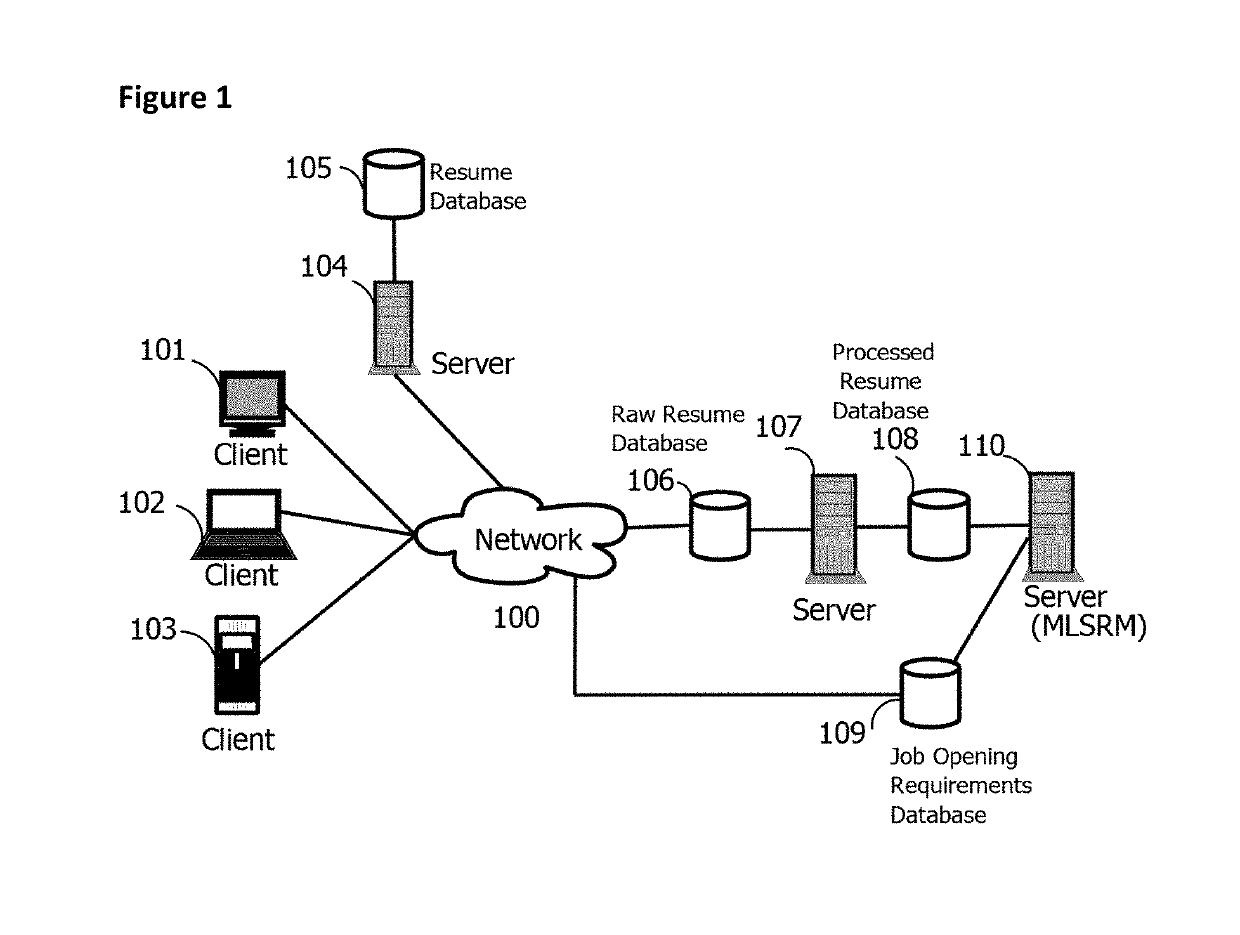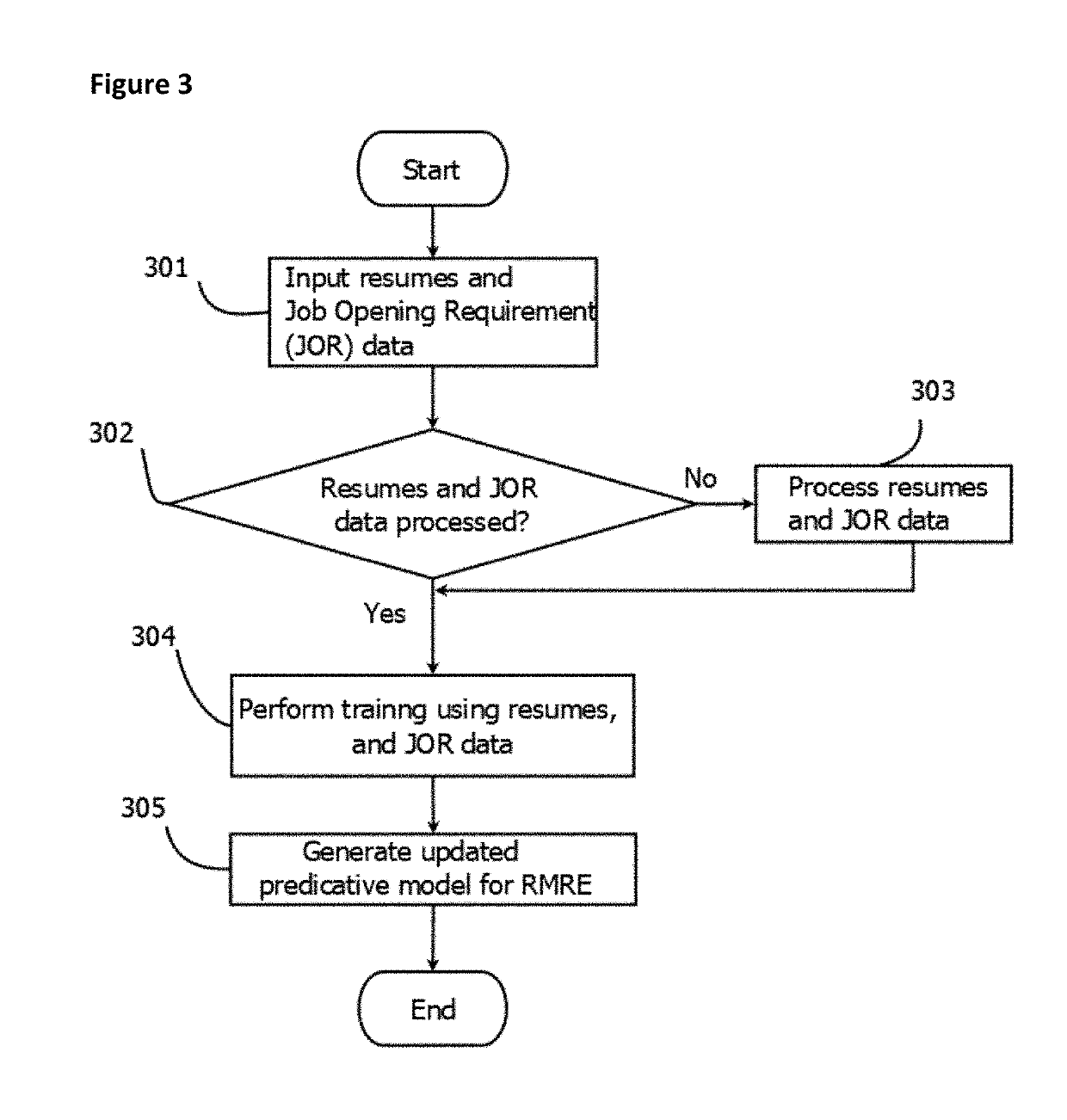Machine learning systems for matching job candidate resumes with job requirements
a machine learning and job candidate technology, applied in the field of automatic systems for matching resumes, can solve the problems of inability to provide heuristic insights or predictive analysis of the fitness and potential of each candidate, and the enormous resources that employers need to find suitable candidates,
- Summary
- Abstract
- Description
- Claims
- Application Information
AI Technical Summary
Benefits of technology
Problems solved by technology
Method used
Image
Examples
training example 1
[0043]Regarding the above-mentioned examples, the weights could be assigned, including relocation willingness weight W1 and school index weight W2, which as defined below.
relocation willingness weight W1=(W—high if (location is A) and (job field is B)) or (W—low (if location is C) and (job field is D)),
school index weight W2=W21 (if school is from group 1 for corporation X) or W22 (if school is from group 2 for corporation X) . . . or W2n (if school is from group n for corporation X)
[0044]Many known machine learning algorithms, such as a regression algorithm, may be implemented to learn and know how to classify a location in a resume to W—high or W—low. For example, after training with resume data, the predictive model learns that last job location being in the Silicon Valley plus job field being Internet technologies would classify a resume's W1 to W—high. For example, a binary classification algorithm may be used, taking applicant's current location or distance to the job post, an...
training example 2
[0047]Another example could be a career path success weight for particular job types. For example, a software engineer would have a higher level of success in a position of software architect if he or she advances his / her career from “software engineer” to “senior software engineer” in 5 years than another software engineer who takes more than 10 years to achieve the same senior position. These career advances are related to companies, titles of the jobs, and lengths of holding different job positions, the combination of which can be expressed in a function:
W3=f(A, field, other relate data), wherein A is a set of entries, each entry being a dataset of (employer data, job title, years of service in the title, etc)
[0048]Another example to perform training is to utilize all features in a single machine learning algorithm, such as a neural network algorithm, to perform training and obtain a predictive model. For example, the features may include (1) years of work experience, (2) years s...
PUM
 Login to View More
Login to View More Abstract
Description
Claims
Application Information
 Login to View More
Login to View More - R&D
- Intellectual Property
- Life Sciences
- Materials
- Tech Scout
- Unparalleled Data Quality
- Higher Quality Content
- 60% Fewer Hallucinations
Browse by: Latest US Patents, China's latest patents, Technical Efficacy Thesaurus, Application Domain, Technology Topic, Popular Technical Reports.
© 2025 PatSnap. All rights reserved.Legal|Privacy policy|Modern Slavery Act Transparency Statement|Sitemap|About US| Contact US: help@patsnap.com



